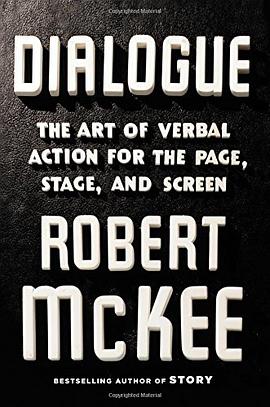
The Art of Verbal Action for Page, Stage, and Screen
Robert Mckee
简介
The long-awaited follow-up to the perennially bestselling writers' guide Story , from the most sought-after expert in the art of storytelling.
Robert McKee's popular writing workshops have earned him an international reputation. The list of alumni with Oscars runs off the page. The cornerstone of his program is his singular book, Story, which has defined how we talk about the art of story creation.
Now, in Dialogue , McKee offers the same in-depth analysis for how characters speak on the screen, on the stage, and on the page in believable and engaging ways. From Macbeth to Breaking Bad, McKee deconstructs key scenes to illustrate the strategies and techniques of dialogue. Dialogue applies a framework of incisive thinking to instruct the prospective writer on how to craft artful, impactful speech. Famous McKee alumni include Peter Jackson, Jane Campion, Geoffrey Rush, Paul Haggis, the writing team for Pixar, and many others.
contents
## Part One: The Art of Dialogue
* Chapter One: The Full Definition of Dialogue
* Chapter Two: The Three Functions of Dialogue
* Chapter Three: Expressivity I: Content
* Chapter Four: Expressivity II: Form
* Chapter Five: Expressivity III: Technique
## Part Two: Flaws and Fixes
* Introduction: Six Dialogue Tasks
* Chapter Six: Credibility Flaws
* Chapter Seven: Language Flaws
* Chapter Eight: Content Flaws
* Chapter Nine: Design Flaws
## Part Three: Creating Dialogue
* Chapter Ten: Character-Specific Dialogue
* Chapter Eleven: Four Case Studies
## Part Four: Dialogue Design
* Chapter Twelve: Story/Scene/Dialogue
* Chapter Thirteen: Balanced Conflict (THE SPOPRANOS)
* Chapter Fourteen: Comic Conflict (FRASIER)
* Chapter Fifteen: Asymmetric Conflict (A Raisin in the Sun)
* Chapter Sixteen: Indirect Conflict (The Great Gatsby)
* Chapter Seventeen: Reflexive Conflict (Fraulein Else and The Museum of Innocence)
* Chapter Eighteen: Minimal Conflict (LOST IN TRANSLATION)
* Chapter Nineteen: Mastering the Craft

